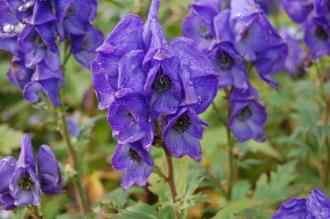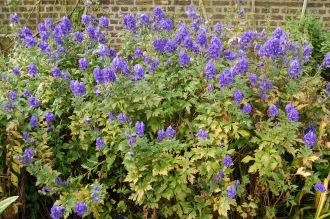
Aconitum carmichaelii ‘Kelmscott’ Flower (20/10/2012, Kew Gardens, London)
Position: Full sun to partial shade
Flowering period: Autumn
Soil: Moist, well drained
Eventual Height: 1.8m
Eventual Spread: 40cm
Hardiness: 4a – 8b
Family: Ranunculaceae
Aconitum carmichaelii ‘Kelmscott’ is an erect, deciduous, clump forming, herbaceous perennial. Its glossy dark green leaves are palmate and deeply lobed with up to 7 segments. Its dark lavender blue flowers appear in the shape of hoods and are up to 5cm long. Its roots are tubers which aids is spread.
The species Aconitum carmichaelii, commonly known as Chinese Aconite, Carmichael’s Monkshood or Chinese Wolfsbane, is native to East Asia. All parts of this plant are extremely toxic.
The etymological root of the binomial name Aconitum is from the ancient Greek name for this plant and is loosely translated as ‘unconquerable poison’. Carmichaelii is named after the plant hunter Captain Dugald Carmichael (1772–1827).
The landscape architect may find Aconitum carmichaelii ‘Kelmscott’ useful as part of a woodland planting scheme. Care should be taken when locating this plant due to its poisonous nature, including via skin.
Ecologically, Aconitum carmichaelii ‘Kelmscott’ flowers are attractive to pollinating insects. This plant is also attractive to some birds.
The Royal Horticultural Society has given Aconitum carmichaelii ‘Kelmscott’ their prestigious Award of Garden Merit in 1993.

Aconitum carmichaelii ‘Kelmscott’ (20/10/2012, Kew Gardens, London)
Aconitum carmichaelii ‘Kelmscott’ prefers moist, fertile, well-drained soils. It tolerates most pH of soil. It will not tolerate dry soils.
Aconitum carmichaelii ‘Kelmscott’ requires little maintenance. To keep a tidy appearance old flowering stems may be removed in spring. Large clumps may be divided in late autumn.

